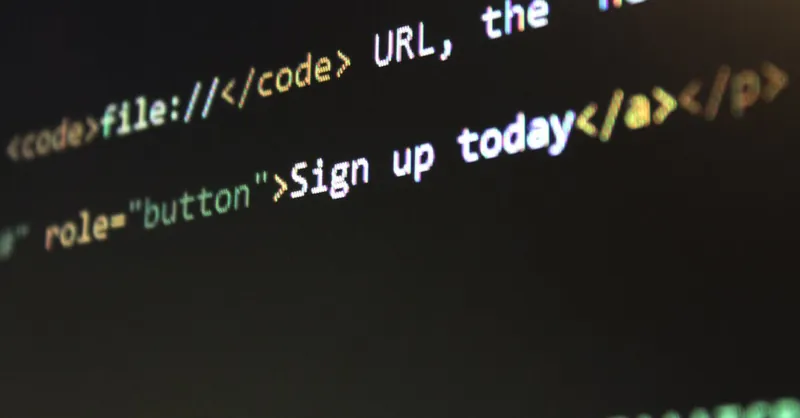Managing Static Files in Django Projects: A Practical Guide
Category: Django
Mastering Static Files in Django: A Clear and Practical Guide
If you're an aspiring or intermediate web developer working with Django, you've likely encountered the challenges of managing static files effectively. Whether it's CSS, JavaScript, or images, handling these files correctly is crucial for building efficient and maintainable Django projects. You’ve searched for straightforward, practical guidance that demystifies how to set up and optimize static file management without digging through overwhelming or overly technical resources. This post is tailored precisely for you — offering clear, step-by-step explanations and best practices to help you serve your static assets smoothly both in development and production environments.
Unlike generic tutorials, this guide delves deeply into Django’s static files system, covering common pitfalls, configuration settings, deployment strategies, and integrating with front-end tools. We'll tackle everything from basic static file setup, using the {% static %} template tag, collecting static files with collectstatic, to leveraging third-party tools and CDN support. By the end, you’ll feel confident managing static files so your applications load faster, look polished, and scale gracefully. Let's streamline your Django projects together—starting with the foundational aspects of managing static content efficiently.
- Mastering Static Files in Django: A Clear and Practical Guide
- Understanding Static Files in Django
- Configuring STATIC_URL and STATICFILES_DIRS
- Using the {% static %} Template Tag: Best Practices for Referencing Static Files
- Organizing Static Files within Apps and Project-Level Directories
- Collecting Static Files for Production with collectstatic
- Serving Static Files in Development vs. Production: Key Differences and Best Practices
- Optimizing Static Assets: Compressing, Caching, and Versioning for Better Load Times and SEO
- Integrating Front-End Build Tools with Django’s Static Files System
- Debugging Common Static Files Issues: Diagnosing and Resolving Frequent Problems
- Advanced Static Files Management: Leveraging Django Storage Backends, CDN Configurations, and Custom Static File Finders
Understanding Static Files in Django
Before diving into the practical setup and management of static files, it’s essential to understand what static files are and their role in Django web applications. In web development, static files refer to assets like CSS stylesheets, JavaScript files, images, fonts, and other resources that don’t change dynamically. These files are served directly to the user’s browser to enhance the look, feel, and interactivity of your website.
Django treats static files differently from media files, which are user-uploaded content such as profile pictures or document uploads. This distinction is crucial for proper configuration because:
- Static files are bundled and maintained by developers as part of the application’s codebase. They are intended to remain constant across user sessions and deployments.
- Media files are generated or uploaded by end users during runtime and need separate handling for storage, access, and security.
Django’s static files framework provides a robust system to manage these assets efficiently. It includes settings and commands like STATIC_URL, STATICFILES_DIRS, and collectstatic to gather and serve static content, ensuring your assets are organized and delivered at optimal speed. Understanding this separation helps prevent common mishaps, such as accidentally exposing user uploads or mixing development assets with production files, paving the way for a scalable and maintainable Django project.

Image courtesy of Lukas
Configuring STATIC_URL and STATICFILES_DIRS
To serve static files properly during Django development, the two most essential settings you must configure are STATIC_URL and STATICFILES_DIRS. Understanding and setting these correctly ensures your CSS, JavaScript, images, and other assets are referenced accurately in your templates and accessible by Django’s development server.
What is STATIC_URL?
STATIC_URL defines the URL prefix for all static files in your project. This prefix tells Django where to look for static files when rendering the template tags {% static %}, which dynamically create the right URL paths in your HTML.
Typically, during development, you’d set STATIC_URL to a path like:
STATIC_URL = '/static/'
This means that all static files will be served under the /static/ URL path. When Django’s development server runs with DEBUG=True, it automatically serves these files at this URL, making them easily accessible in your web pages. Without correctly setting STATIC_URL, your browser won’t find the static assets, leading to broken styles or missing scripts.
Defining STATICFILES_DIRS for Custom Static Assets
By default, Django looks for static files inside each app's static/ subdirectory. However, many projects maintain global static assets — like shared CSS or JavaScript libraries — outside individual apps. For these files, you use STATICFILES_DIRS.
STATICFILES_DIRS is a list of filesystem directories where Django will additionally search for static files during development. Setting this allows you to organize your static files cleanly and avoid scattering them across apps. For example:
import os
BASE_DIR = os.path.dirname(os.path.dirname(os.path.abspath(__file__)))
STATICFILES_DIRS = [
os.path.join(BASE_DIR, "static"),
]
In this setup:
- A folder named
staticis located at your project root. - Django will include this directory when locating static assets.
- This is especially helpful for global stylesheets, JavaScript utilities, or image libraries used by multiple apps.
Best Practices for STATIC_URL and STATICFILES_DIRS
- Keep
STATIC_URLconsistent: Use a trailing slash (e.g.,/static/) to avoid URL resolution issues. - Organize assets logically: Use
STATICFILES_DIRSfor shared or project-wide static files, and app-levelstaticfolders for app-specific assets. - Avoid overlap: Don’t duplicate files between app-level static directories and
STATICFILES_DIRS, as this can lead to conflicts when collecting static files.
By carefully configuring STATIC_URL and STATICFILES_DIRS, you enable seamless static file referencing during development, making your project easier to maintain and your assets easier to manage. This foundational step sets the stage for efficient static file handling across both dev and production environments.

Image courtesy of Pixabay
Using the {% static %} Template Tag: Best Practices for Referencing Static Files
In Django templates, the {% static %} template tag is the de facto way to reference static files such as CSS, JavaScript, and images. This tag dynamically generates the correct URL path for static assets based on your project's settings, ensuring that static files resolve properly in both development and production environments. Mastering the proper use of {% static %} helps avoid broken links, caching issues, and inconsistent asset loading.
Why Use {% static %} Instead of Hardcoding URLs?
Hardcoding static file URLs (e.g., /static/css/style.css) may work during development but is error-prone, especially in production where static files might be served from CDN domains or different URL prefixes. The {% static %} tag abstracts these details, making your templates portable and environment-agnostic.
How to Use {% static %} Correctly
-
Load the static template tag library: At the very beginning of your template, include
{% load static %}to enable usage of the static tag. -
Wrap your static file paths with
{% static %}: When referencing assets, use the tag as follows:
```django
{% load static %}
 ```
```
- Use forward slashes and relative paths: Always specify relative paths inside the static directory and avoid leading slashes to prevent URL resolution issues.
Best Practices for Using {% static %} in Django Templates
- Consistently load the static library: Forgetting
{% load static %}results in template errors or unprocessed tags. - Use descriptive folder organization: Organize your static files in directories like
css/,js/, andimages/to keep paths clean and maintainable. - Avoid inline URLs: Never hardcode URLs directly in your templates; always use
{% static %}to future-proof asset paths. - Combine with cache busting: For production, integrate cache-busting techniques (like hashed filenames) with
{% static %}to ensure browsers fetch the latest assets. - Test your templates: Check that all static asset URLs resolve correctly both in development (
DEBUG=True) and after runningcollectstaticfor production.
By rigorously using the {% static %} template tag, you guarantee your static files are always linked correctly regardless of environment. This practice not only reduces errors but also aligns with Django’s built-in conventions for effective static file management, improving maintainability, scalability, and site performance.

Image courtesy of Lukas
Organizing Static Files within Apps and Project-Level Directories
A well-structured directory organization for static files is critical for creating modular, scalable Django projects that remain maintainable as they grow. Django encourages placing static files inside each app within a dedicated static directory, but larger projects often require additional project-level static directories for shared assets. Balancing app-specific static files with global static resources enables clean separation of concerns and easier collaboration among teams.
Recommended Directory Structure for App-Level Static Files
Within each Django app, create a static folder following this pattern:
your_app/
└── static/
└── your_app/
├── css/
├── js/
└── images/
Key points here include:
- Namespace your static files by app name: This prevents filename collisions when multiple apps include static files with identical names (e.g.,
style.cssorlogo.png). - Organize assets by type folders (
css/,js/,images/) to improve clarity and maintainability. - Keep app-specific assets inside the app folder so they stay tightly coupled to the app’s functionality and can be reused or removed independently.
Structuring Project-Level Static Files for Shared Usage
For assets used across multiple apps—like base stylesheets, site-wide JavaScript libraries, or shared images—use a dedicated project-level static directory (often named just static/) at your project root:
project_root/
├── your_app1/
├── your_app2/
├── static/
│ ├── css/
│ ├── js/
│ └── images/
└── manage.py
Benefits of this approach include:
- Centralizing shared assets for better reuse and easier updates.
- Avoiding duplication and conflicts between apps.
- Allowing you to easily include this directory in
STATICFILES_DIRSfor Django to find in development.
Best Practices for Modular and Scalable Static File Management
- Use app namespacing consistently: Always nest static files inside a subfolder named after the app to prevent conflicts when running
collectstatic. - Avoid mixing app and project static files: Clearly separate app-level and project-level static files to clarify ownership and simplify maintenance.
- Leverage
STATICFILES_DIRSwisely: Include only essential global static directories here; avoid adding every app’s static folder, as Django discovers those automatically. - Keep the directory hierarchy shallow but descriptive: Deeply nested folders can complicate paths and references, so balance organization with simplicity.
- Document your static file structure: Make sure the whole team understands where to put new static assets, preventing confusion and misplaced files.
By following a modular directory structure and clearly distinguishing between app-level and project-level static files, you'll enable Django to efficiently collect, serve, and manage your assets. This strategy supports scalable development workflows, prevents asset conflicts, and makes your static file management robust and maintainable as your Django project expands.

Image courtesy of Lukas
Collecting Static Files for Production with collectstatic
When moving from development to production, efficiently managing and deploying static files becomes critical to ensure your Django application loads quickly and reliably. This is where Django’s powerful collectstatic management command plays a vital role. It automates gathering all static assets from your apps and any additional directories into a single, centralized location—typically the directory configured by STATIC_ROOT. This consolidated folder is then used by your web server or CDN to serve static files with optimal performance.
Understanding the collectstatic Command
Running the command:
python manage.py collectstatic
does the following:
- Searches all static file locations: It scans every app’s
staticsubdirectory plus any paths defined inSTATICFILES_DIRS. - Copies and consolidates files: All found static assets are copied into the directory defined by
STATIC_ROOT, flattening the multiple sources into one deployable folder. - Handles file overwrites: If the same filename appears in multiple locations, Django overwrites files based on the order of apps and directories specified in
INSTALLED_APPSandSTATICFILES_DIRS. - Supports storage backends: The command integrates seamlessly with storage backends (like Amazon S3 or Google Cloud Storage) when configured, enabling direct upload of static files to cloud storage services.
Optimizing Static Asset Deployment for Production
To fully leverage collectstatic in production, consider these best practices:
- Set
STATIC_ROOTin yoursettings.py: This path should point to an empty directory where all static files will be collected:
python
STATIC_ROOT = os.path.join(BASE_DIR, 'staticfiles')
- Run
collectstaticbefore deployment: Automate this step in your deployment pipeline to ensure the latest static files are always served. - Use hashed filenames for cache busting: Integrate
ManifestStaticFilesStorageor similar storages to append hashes to filenames—for example,style.55e7cbb9.css. This prevents browsers from caching outdated assets.
python
STATICFILES_STORAGE = 'django.contrib.staticfiles.storage.ManifestStaticFilesStorage'
- Serve static files via a dedicated web server or CDN: After collection, serve your static assets through high-performance servers like Nginx or CDN providers to reduce load on Django and improve global delivery speed.
- Clean your static root before collecting (optional): Use the
--clearflag withcollectstaticto remove old static files, avoiding clutter and potential conflicts:
bash
python manage.py collectstatic --clear
By mastering the collectstatic command and pairing it with optimized settings, you ensure your Django projects deliver fast-loading, reliable static content in production. This results in better user experience, improved SEO scores, and scalable, maintainable deployment workflows that keep your project professional and future-proof.

Image courtesy of Lukas
Serving Static Files in Development vs. Production: Key Differences and Best Practices
Managing static files in Django requires different approaches depending on whether you are working in a development environment or a production environment. Understanding these differences ensures your static assets—CSS, JavaScript, images, and fonts—are served efficiently, securely, and with optimal performance tailored to each stage of your project’s lifecycle.
Development: Using Django’s Built-in Static File Server
During development, Django’s built-in development server automatically serves static files when DEBUG=True. This simplifies the workflow as you don’t need extra setup to access your CSS or JavaScript. Key points to note:
- Automatic static file serving: No additional web server configuration is required; Django handles all static requests at the URL defined by
STATIC_URL. - Quick iteration: Changes to static files are instantly available without running
collectstaticbecause files are served directly from their source directories. - Not suitable for production: Django’s development server is not optimized for performance or security in production and should never be used for serving static files live.
While convenient for development, this setup lacks caching, compression, and file versioning that are critical for scalable, performant applications. This leads us to production strategies for static file handling.
Production: Using WhiteNoise, CDN, or Dedicated Web Servers
In production, static files must be served efficiently to reduce server load, speed up content delivery, and improve user experience. Since Django's built-in server is not designed for production-scale static file serving, developers use one or more of the following approaches:
1. WhiteNoise: Simplified Static File Serving within Django
WhiteNoise is a popular Django package that enables your Django application to serve static files efficiently without needing an external web server like Nginx. It offers several benefits:
- Automatic compression and caching: WhiteNoise applies gzip and Brotli compression and adds cache headers for better client-side performance.
- Easy integration: Simply add WhiteNoise middleware to your Django project for instant static file serving in production.
- Environment agnostic: Works on platforms like Heroku where dedicated static file servers may not be available.
Example of adding WhiteNoise:
MIDDLEWARE = [
'django.middleware.security.SecurityMiddleware',
'whitenoise.middleware.WhiteNoiseMiddleware',
# other middleware...
]
STATICFILES_STORAGE = 'whitenoise.storage.CompressedManifestStaticFilesStorage'
2. Dedicated Web Servers (e.g., Nginx or Apache)
For larger or more traditional deployments, static files are served by dedicated web servers outside Django:
- Serve files from
STATIC_ROOT: After runningcollectstatic, static files reside in a centralized directory. - Configure web server rules: Nginx or Apache can be configured to serve static files directly—offloading this task from Django and improving performance.
- Enable caching and compression: Web servers handle efficient delivery, using features such as cache-control headers and gzip compression.
3. CDN Integration for Global Scale and Speed
For the best performance worldwide, many projects host static files on Content Delivery Networks (CDNs) like Cloudflare, AWS CloudFront, or Google Cloud CDN:
- Faster delivery: CDNs cache static assets closer to users geographically.
- Reduced server load: Your Django backend handles fewer static requests.
- Simplified scaling: CDNs handle traffic spikes and optimize bandwidth.
To integrate, you configure Django’s STATIC_URL to point to the CDN base URL (e.g., https://cdn.example.com/static/) and upload static assets to the CDN either manually or via deployment automation tools.
Choosing the Right Approach
| Environment | Recommended Approach | Benefits |
|---|---|---|
| Development | Django’s built-in static server | Simplifies development and testing, no extra setup needed. |
| Production | WhiteNoise | Easy integration, good for small to medium projects & Heroku. |
| Production | Dedicated web server (Nginx/Apache) | Robust, fast static file serving for traditional deployments. |
| Production | CDN | Best performance and scalability for large-scale applications. |
Summary of Best Practices for Serving Static Files Across Environments
- Never serve static files with Django’s dev server in production. It doesn’t support caching, compression, or scaling.
- Use WhiteNoise for quick production static file serving if external web servers aren’t available.
- Leverage dedicated static servers or web servers for high-performance self-hosted deployments.
- Integrate a CDN for global scaling, reduced latency, and bandwidth savings.
- Ensure your
STATIC_URLcorrectly reflects your production static hosting solution—whether local, WhiteNoise, or CDN-based—to avoid broken asset links.
Mastering the differences between static files handling in development and production empowers you to deliver Django projects that are both easy to build and fast to serve in real-world use cases. Next, we'll dive deeper into configuring WhiteNoise and CDN setups to optimize your production static asset workflow.

Image courtesy of Lukas
Optimizing Static Assets: Compressing, Caching, and Versioning for Better Load Times and SEO
To deliver a fast, responsive Django website with excellent SEO performance, optimizing your static assets—CSS, JavaScript, images, and fonts—is essential. Proper optimization reduces page load times, lowers bandwidth usage, and improves user experience, all of which are key ranking factors in search engines. Let’s explore practical, proven techniques for compressing, caching, and versioning static files in Django projects.
1. Compressing Static Files to Reduce Payload Size
Compression minimizes the size of your static assets sent over the network, speeding up page loads especially on slower connections. The most common compression formats are:
- Gzip: Widely supported and effective for text-based files like CSS and JavaScript.
- Brotli: Newer, more efficient compression supported by modern browsers.
How to Enable Compression in Django Static Files
- Use WhiteNoise, which automatically serves compressed versions of your static files with minimal setup:
```python MIDDLEWARE = [ 'django.middleware.security.SecurityMiddleware', 'whitenoise.middleware.WhiteNoiseMiddleware', # other middleware... ]
STATICFILES_STORAGE = 'whitenoise.storage.CompressedManifestStaticFilesStorage' ```
- If you serve static files via Nginx, enable gzip compression in the server configuration to compress all suitable static assets on the fly.
Benefits of Compression
- Reduces bandwidth usage both on server and client sides.
- Improves page load speed, resulting in higher SEO rankings and better user retention.
- Works seamlessly with caching strategies to ensure compressed files are cached efficiently.
2. Leveraging Browser Caching for Static Resources
Caching allows browsers to store static files locally, preventing unnecessary re-downloads on subsequent page visits. Proper cache control dramatically improves perceived site speed and reduces server load.
Implement Cache Control with Django
-
Set far-future Cache-Control headers by using the appropriate static files storage backend, such as
ManifestStaticFilesStorageor WhiteNoise’s compressed storage. These backends append hashes to file names, allowing aggressive caching without risking stale content. -
Configure your web server or CDN to serve static files with long expiration times. For example, in Nginx:
location /static/ {
expires 30d;
add_header Cache-Control "public";
}
Key Caching Best Practices
- Use immutable caching by versioning static files so browsers can cache indefinitely without missing updates.
- Avoid overly aggressive caching for files expected to change frequently.
- Combine cache headers with compressed assets for maximum speed improvements.
3. Implementing Versioning and Cache Busting
When you update your static files, browsers may continue using cached outdated versions unless you change the URLs referencing them. Versioning or cache busting solves this by modifying file names or URLs whenever content changes.
How Django Supports Static File Versioning
- Utilize Django's built-in
ManifestStaticFilesStoragewhich appends a hash based on file content to static filenames duringcollectstatic:
css/style.4f3e2a1d.css
js/app.7e9a0c4f.js
- This automatic hashing informs browsers that a new file version exists, instantly invalidating old caches.
Benefits of Cache Busting in SEO and Performance
- Ensures users always load the latest styles and scripts without manual cache clearing.
- Prevents broken layouts or JavaScript errors caused by stale files.
- Improves crawlability and indexing by search engines that depend on current site resources.
- Facilitates smoother deployments and continuous integration workflows.
By compressing static files, leveraging browser caching, and implementing robust versioning, you significantly boost your Django app’s load speed and SEO infrastructure. Combining these optimization techniques with Django’s static files framework and modern deployment tools ensures your static assets perform efficiently under any traffic conditions, creating a superior experience for both users and search engines.

Image courtesy of FreeBoilerGrants
Integrating Front-End Build Tools with Django’s Static Files System
As Django projects grow in complexity, managing static assets like CSS, JavaScript, and images manually can become cumbersome. Integrating front-end build tools such as Webpack, Gulp, or npm scripts alongside Django’s static files system is a powerful approach to automate bundling, minification, transpilation, and asset optimization. This not only enhances workflow efficiency but also produces leaner, faster-loading static files optimized for production.
Why Use Front-End Build Tools with Django?
Django’s built-in static files framework excels at serving and organizing assets, but it doesn’t provide advanced features like:
- Module bundling: Combining multiple JavaScript or CSS files into fewer bundles to reduce HTTP requests.
- Transpiling: Converting modern JavaScript (ES6+) or SASS/LESS into browser-compatible CSS and JS.
- Minification: Removing whitespace and comments to minimize file size.
- Asset fingerprinting: Automatically adding hashes to filenames for robust cache busting.
- Live reload during development: Accelerating developer feedback loops.
Front-end tools streamline these tasks by integrating with the development cycle, outputting optimized static assets that Django can serve seamlessly.
How to Work with Build Tools in Django
- Set up your build tool to output files into Django’s static directories
Configure tools like Webpack or Gulp to place compiled and optimized assets inside a folder recognized by Django’s STATICFILES_DIRS or within an app’s static/ directory. For example, your Webpack output.path might be:
js
path: path.resolve(__dirname, 'static/dist/')
This ensures Django can find the built assets and collect them with collectstatic for production deployment.
- Reference build-generated files with the
{% static %}template tag
Use Django’s template tags to point to the bundled files:
```django
{% load static %}
```
This approach keeps static file URLs dynamic and environment agnostic, critical for caching and CDN integration.
- Automate with npm scripts or task runners
Incorporate build commands in package.json scripts to run bundling, compilation, linting, or tests in one place. For example:
json
"scripts": {
"build": "webpack --mode production",
"watch": "webpack --watch",
"start": "webpack-dev-server"
}
This promotes consistent asset compilation across development, testing, and deployment.
Best Practices for Front-End Build Tool Integration
- Keep your front-end dependencies separate: Manage JavaScript and CSS packages with npm or yarn, independent from Python’s pip, for clearer dependency control.
- Use version control wisely: Typically, exclude generated static files like bundles from Git and regenerate them during deployment to avoid merge conflicts and reduce repository size.
- Enable source maps during development: This facilitates debugging by mapping minified code back to your original sources.
- Combine hashing with Django’s staticfiles versioning: Configure your build tool to generate hashed filenames and align with Django storage backends like
ManifestStaticFilesStoragefor reliable cache invalidation. - Integrate live reload and hot module replacement: Tools like Webpack Dev Server boost productivity by automatically reloading the page or injecting updated modules without a full reload.
By effectively combining Django’s static files management with modern front-end build tools, you create a powerful, scalable asset pipeline. This setup enhances development speed, optimizes production payloads, and produces cleaner, maintainable static files that improve site load times, SEO rankings, and overall web application performance.

Image courtesy of Lisa from Pexels
Debugging Common Static Files Issues: Diagnosing and Resolving Frequent Problems
Even with a solid static files configuration, Django developers often encounter common issues such as static files not loading, incorrect paths, or permission errors. Understanding how to diagnose and fix these problems quickly is crucial to maintaining a smooth development workflow and delivering a polished user experience. Below, we highlight typical static files pitfalls and practical solutions to resolve them.
1. Static Files Not Loading in Development
If your stylesheets, scripts, or images are missing or not displayed, verify the following:
STATIC_URLis correctly set insettings.pyand includes the trailing slash (e.g.,/static/). Incorrect or missingSTATIC_URLoften causes 404 errors for static assets.- Make sure you have included
{% load static %}at the top of your Django templates and use{% static 'path/to/file' %}for all static asset references instead of hardcoded URLs. - Check your browser’s developer console for 404 errors on static assets and confirm the requested URLs match your static directories.
- Ensure the development server is running with
DEBUG=True, as Django’s builtin static file serving only works in debug mode. - If you use custom static directories via
STATICFILES_DIRS, confirm these paths are valid and accessible.
2. Issues After Running collectstatic
When static files don’t appear correctly in production:
- Verify that
STATIC_ROOTis defined insettings.pyand points to the folder where static files should be collected. - Make sure to run
python manage.py collectstaticbefore launching your production server or deployment pipeline. - Check for file overwrites or conflicts during the collection process — if multiple apps have files with the same relative path, one may unintentionally override the other.
- Confirm your production web server or CDN serves files from the
STATIC_ROOTlocation and uses the correct URL prefix as defined by your productionSTATIC_URL. - Inspect file permissions in
STATIC_ROOT; static files must have read permissions for the web server user to avoid permission denied errors.
3. Permission Denied or Access Errors
File permission issues are common, especially on Linux-based production servers:
- Ensure your production server user (e.g.,
www-datafor Nginx) has read access to the static files directory and files. - When deploying, set proper permissions recursively for static files, for example:
bash
sudo chown -R www-data:www-data /path/to/staticfiles
sudo chmod -R 755 /path/to/staticfiles
- If you use cloud storage for static assets (e.g., AWS S3), check your bucket policies and CORS configurations to allow public read access on needed files.
4. Incorrect or Broken Static File Paths
Incorrect URLs can stem from misconfigured settings or template usage:
- Confirm that all static file references use the
{% static %}template tag instead of hardcoded or relative URLs. - Check for leading slashes or typos in the static file paths inside
{% static %}— they should be relative and avoid starting with/. - Make sure your
STATICFILES_DIRSand app-level static folders do not have overlapping files that cause confusion during collection. - Clear your browser cache or perform a hard reload to ensure old, cached asset URLs don’t interfere.
By following these debugging steps—verifying configuration settings, ensuring correct template usage, managing permissions, and confirming deployment procedures—you can quickly resolve the majority of static file problems in Django. Maintaining vigilance around these areas prevents common static assets errors that often lead to frustrating broken styles, missing scripts, or slow-loading pages, thereby ensuring your Django applications deliver a seamless, professional front-end experience.

Image courtesy of Markus Spiske
Advanced Static Files Management: Leveraging Django Storage Backends, CDN Configurations, and Custom Static File Finders
For large-scale or distributed Django projects, managing static files efficiently requires going beyond the default setup. Advanced static files management techniques, such as using custom storage backends, integrating CDNs (Content Delivery Networks), and implementing custom static file finders, offer scalable, high-performance solutions that optimize asset delivery and simplify deployment workflows.
Leveraging Custom Storage Backends for Scalable Static Asset Handling
Django’s static files system is highly extensible, allowing you to replace the default filesystem storage with custom storage backends tailored for your infrastructure. This is critical when serving static files from remote or cloud-based storage solutions rather than local disks.
Popular storage backends include:
-
Amazon S3 Storage
Using libraries likedjango-storagescombined with AWS S3 enables you to store and serve static files directly from S3 buckets. This offloads static assets from your application servers and provides global availability. -
Google Cloud Storage and Azure Blob Storage
Similar to S3, these provide highly durable and scalable object storage solutions compatible with Django through custom storage backends, seamlessly integrating static files support in cloud ecosystems. -
CDN-Integrated Storage Backends
Some storage backends automatically synchronize your static files with CDNs, enabling low-latency delivery by caching assets geographically closer to your users.
To configure a custom storage backend, you override the STATICFILES_STORAGE setting in your settings.py:
STATICFILES_STORAGE = 'storages.backends.s3boto3.S3Boto3Storage' # Example for AWS S3
This change directs Django’s collectstatic command to upload static files to your configured backend, ensuring your deployment pipeline handles asset distribution efficiently.
Configuring CDNs for High-Speed, Reliable Static File Delivery
Integrating a Content Delivery Network (CDN) dramatically improves your site’s static file performance by distributing content globally and reducing server load. A CDN caches your static assets at multiple edge locations, delivering them from the closest node to the end-users.
To utilize a CDN effectively in Django:
- Set
STATIC_URLto point to your CDN’s base URL, for example:
python
STATIC_URL = 'https://cdn.yourdomain.com/static/'
-
Upload or synchronize your static files to the CDN origin, often via your cloud storage or deployment scripts.
-
Ensure cache-control headers and versioned file names are properly configured to maximize CDN caching efficiency and enable smooth cache invalidation after deployments.
This setup ensures users worldwide experience minimal latency and rapid content loads, which is essential for SEO and overall user satisfaction.
Implementing Custom Static File Finders for Complex Project Structures
In large applications with complex modular structures or third-party app dependencies, you might need to customize how Django discovers static files. Django’s static file finders allow flexible control over the search paths and methods used during the collectstatic process.
Common use cases for custom static file finders include:
- Scanning additional directories not covered by
STATICFILES_DIRSor appstatic/folders. - Integrating third-party assets supplied in non-standard locations.
- Supporting dynamic static file sources, such as generated files during build steps.
Creating a custom finder involves subclassing django.contrib.staticfiles.finders.BaseFinder and implementing methods like find and list. After implementation, include your finder in the STATICFILES_FINDERS setting:
STATICFILES_FINDERS = [
'django.contrib.staticfiles.finders.FileSystemFinder',
'django.contrib.staticfiles.finders.AppDirectoriesFinder',
'your_project.finders.YourCustomFinder',
]
This flexibility allows you to tailor how Django aggregates static files, ensuring no assets are missed during collection—critical for maintaining a polished front-end in distributed or microservice-oriented projects.
By mastering custom storage backends, CDN configurations, and custom static file finders, you elevate your Django static files management to a professional, scalable level—capable of supporting high-traffic, globally distributed applications with security, speed, and maintainability in mind.

Image courtesy of Jared F&L
